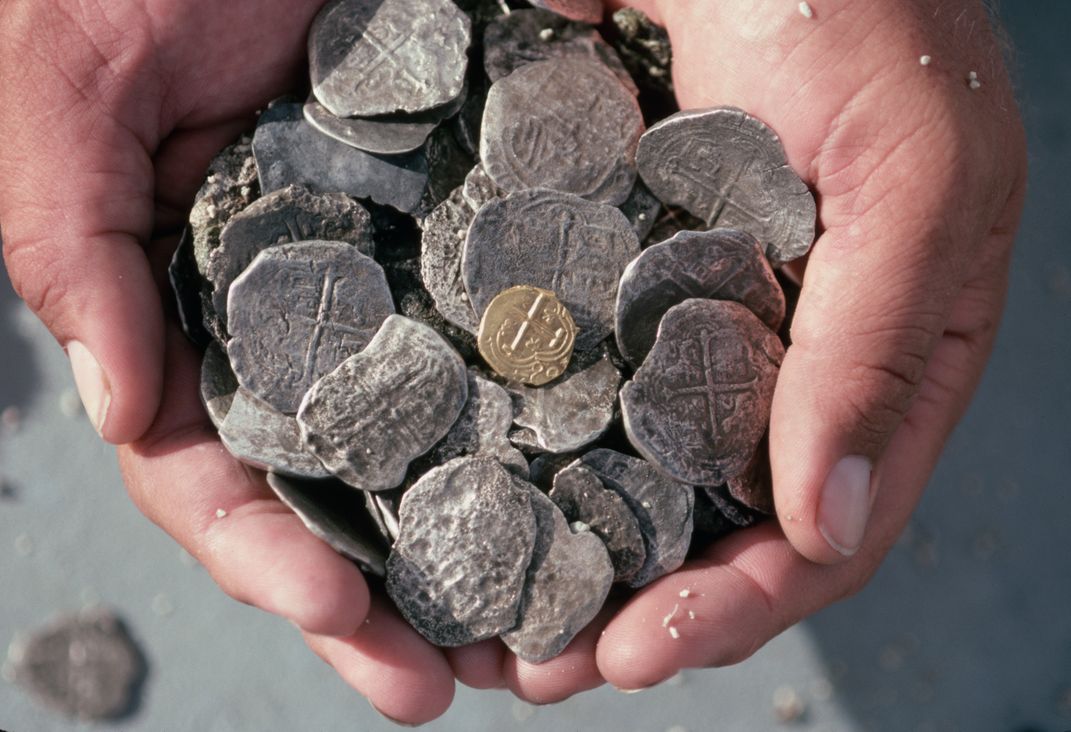Spanish Conquest of the Incas Caused Air Pollution to Spike
A sample of Peruvian ice has revealed a surge in pollution linked to mining that wasn’t exceeded until the Industrial Revolution
/https://tf-cmsv2-smithsonianmag-media.s3.amazonaws.com/filer/f1/9e/f19ed54a-9658-4826-9bf5-5be5795c3d15/42-18518410.jpg)
The arrival of the Spanish in South America in the late 16th century heralded the destruction of the once mighty Inca empire—and triggered a surge in air pollution levels that was not exceeded until the 20th century.
The findings come from analysis of trace elements in a core sample collected in 2003 from the Quelccaya ice cap in Peru. The ice of glaciers and ice caps like Quelccaya accumulates in layers that each hold trace amounts of elements from the atmosphere. Drilling deep into a glacier and extracting a column of ice allows scientists to analyze the elements in the layers and create a record of environmental factors such as climate and pollution.
Paolo Gabrielli of Ohio State University and his colleagues measured a variety of trace elements—including lead, bismuth and arsenic—in the Quelccaya core to track the history of mining and metallurgy in South America from 793 to 1989. Those elements can be spewed into the atmosphere during the extraction and refining of various metals. To verify the ice core data, the team compared it with other types of environmental records, such as peat collected in Tierra del Fuego off the southern tip of South America, and snow from the Coats Land region of Antarctica. The research appears today in the Proceedings of the National Academy of Sciences.
The levels of trace elements were low and mostly stable before the rise of the Inca Empire in the mid-13th century. There were a few exceptions, but the researchers attribute those to volcanic eruptions in the Andes. Around 1480 came the first big spike that can be attributed to humans—a jump in bismuth levels in the ice. At that time, the Inca Empire was expanding, and the Inca began to use bismuth deposits to make a new type of bronze alloy. Archaeologists have found artifacts made of this bismuth bronze at the Inca citadel of Machu Picchu.

But it was the end of the Inca Empire that heralded the biggest increases in air pollution prior to the Industrial Revolution. After the Spanish conquered the Incas in 1533, levels of chromium, molybdenum, antimony and lead began to rise, probably because of Spanish efforts to mine the region for metals. Silver, for instance, was extracted from a mineral called argentiferous galena that also contains lead, and the refining process would have emitted metal-laden dust.
Metal deposits rose until about 1700 then remained consistent until 1830, when they began to decrease. That pattern matches South American history—the region underwent a series of wars of independence in the early 19th century. During that time, “rebel and royalist armies destroyed machinery, killed draft animals, and damaged mines and refineries," the researchers note. "In addition, the scarcity of both [mercury] and labor for amalgamation, lack of transportation infrastructure, dearth of capital, and debilitating fiscal policies all contributed to stagnation in the mining industry during this time.”
The amounts of trace elements in the ice core continued to follow the region’s history, increasing at times when mining activities were known to increase, such as in the early 20th century. Scientists are interested in these records of past air pollution in part because there is an ongoing argument about what constitutes the start of the Anthropocene, a proposed geologic time interval marked by an increase in human activities that have left a mark on Earth. The data in the Quelccaya ice core highlights “the difficulty in defining an unequivocal onset of the Anthropocene,” says Gabrielli.
The start of the Industrial Revolution, and the resulting pollution from the rapid increase in the burning of fossil fuels, has been suggested as a possible start to the Anthropocene. But other time periods have also left behind traces. Lead from the mining and refining of metals during the Greek, Roman and Medieval periods has been found in Greenland ice cores, for instance.
That suggests “that this new epoch emerged discontinuously through space and time during human history,” Gabrielli says. “In other words, our data challenge the concept of the onset of the Anthropocene as a synchronous global discontinuity in the global geological record.”
(Editor's Note: This article has been updated to correct the century in which the Spanish arrived in South America.)
/https://tf-cmsv2-smithsonianmag-media.s3.amazonaws.com/accounts/headshot/Sarah-Zielinski-240.jpg)
/https://tf-cmsv2-smithsonianmag-media.s3.amazonaws.com/accounts/headshot/Sarah-Zielinski-240.jpg)